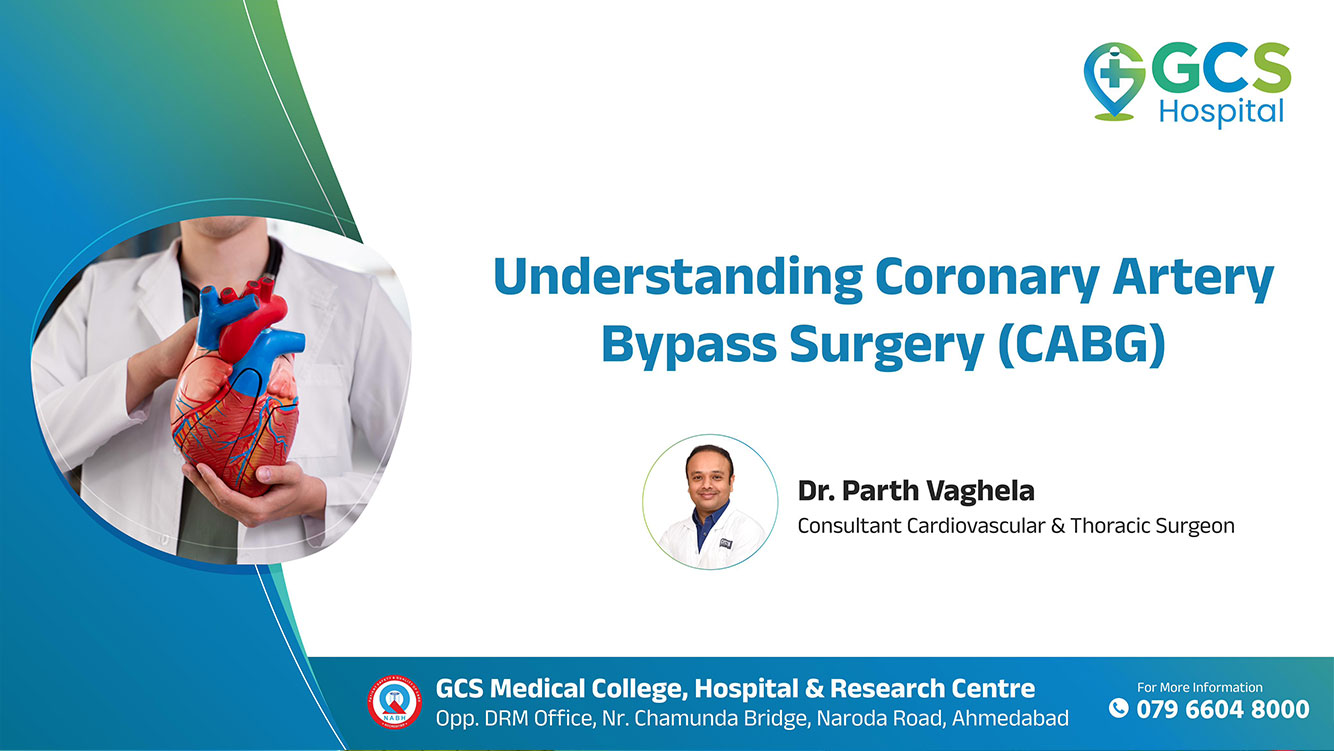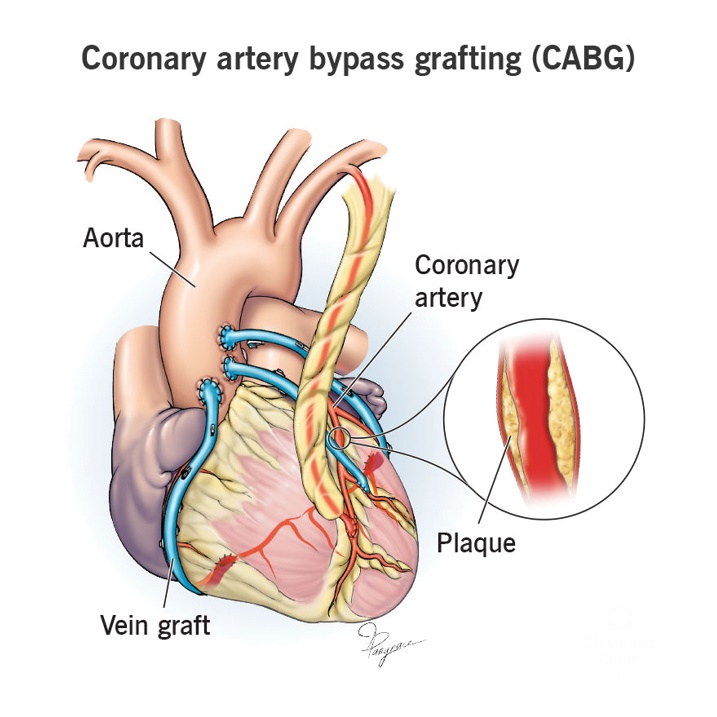
Understanding Coronary Artery Bypass Surgery (CABG)
by Dr. Parth Vaghela - Consultant Cardiovascular & Thoracic Surgeon10 January 2025
Coronary artery bypass grafting (CABG), commonly known as heart bypass surgery, is a critical procedure that helps restore blood flow to areas of the heart when there are blockages in the coronary arteries. Blocked arteries can reduce the blood supply to the heart, leading to heart attacks or heart-related symptoms. CABG restores this vital blood flow by creating a detour using blood vessels from other parts of the body.

What is Coronary Artery Bypass Surgery?
Coronary artery bypass grafting is a surgery that helps restore blood flow to the heart by bypassing blocked coronary arteries. It is commonly performed when a person has coronary artery disease (CAD), which can result in chest pain (angina) or heart attacks. The surgery improves heart function and quality of life, particularly after a heart attack or when there’s a high risk of one.
Why is Coronary Artery Bypass Surgery Needed?
The heart requires a continuous supply of oxygen-rich blood to function properly. Blocked arteries prevent the heart muscle from receiving this blood, causing a condition known as ischemia. If ischemia is not treated, it can lead to heart muscle damage and, eventually, a heart attack.
The heart requires a continuous supply of oxygen-rich blood to function properly. Blocked arteries prevent the heart muscle from receiving this blood, causing a condition known as ischemia. If ischemia is not treated, it can lead to heart muscle damage and, eventually, a heart attack.
Conditions Treated by CABG Surgery
CABG surgery is commonly used to treat conditions related to coronary artery disease, including:
- Coronary heart disease: The most common condition requiring CABG, caused by blockages or narrowing in the coronary arteries.
- Angina: Severe chest pain resulting from reduced blood flow to the heart.
- Myocardial infarction (heart attack): A blockage in the coronary artery that can damage heart tissue.
Who Needs CABG Surgery?
CABG is most often recommended for individuals aged 60 and older, although it can also be performed on younger patients in certain circumstances. It is particularly beneficial for those with multiple blockages in their coronary arteries, especially when other treatments have failed.
Procedure Details
Before undergoing CABG, patients undergo a series of tests to determine the severity of the blockage and suitability for surgery. These tests may include:
- Electrocardiogram (EKG)
- Echocardiogram
- Cardiac catheterization
- Exercise stress tests
- Blood tests
The CABG Procedure
There are several types of coronary artery bypass grafting (CABG) surgery, including:
Traditional CABG
The most common type of CABG surgery, where the sternum is cut open, the heart is stopped, and a heart-lung bypass machine is used.
Off-pump CABG
Also known as beating heart surgery, this procedure is similar to traditional CABG but the heart is not stopped and a heart-lung bypass machine is not used.
Minimally invasive CABG
A relatively new technique that uses several small incisions to access the heart. This procedure is also known as port-access or keyhole surgery.
Endoscopic saphenous vein harvesting (ESVH)
A less invasive method of removing veins from the legs. This procedure uses a special device called an endoscope to locate the vein and remove a section of it.
Hybrid Minimally Invasive Coronary Artery Bypass Surgery and Stent Placement
A hybrid approach that combines the endo-ACAB procedure with angioplasty and stenting.
CABG surgery is a long procedure that requires a general anesthetic and a significant recovery period. The type of procedure that is best for a patient depends on their health.
Recovery and Aftercare
After the surgery, patients are monitored in the intensive care unit (ICU) to ensure proper recovery. Most people stay in the hospital for about 8 to 12 days. Once discharged, patients are advised to attend a cardiac rehabilitation program, which includes exercise, education, and counseling to aid in recovery.
Benefits of CABG Surgery
CABG offers several benefits, including:
- Restoration of blood flow to the heart, reducing symptoms like chest pain.
- Improved heart function, helping patients return to a more active lifestyle
- Long-term outcomes: Studies show improved survival rates for patients who undergo CABG compared to other treatments like angioplasty.
Potential Risks and Complications
As with any major surgery, CABG has some associated risks:
- Infection
- Bleeding
- Irregular heart rhythms
- Stroke or heart attack
- Kidney problems
However, these risks are rare, and advancements in surgical techniques have significantly reduced complications.
Post-Surgery Care and Lifestyle Changes
After surgery, it’s crucial to follow the doctor’s instructions for medication, rehabilitation, and lifestyle changes. Adopting a heart-healthy diet, quitting smoking, and engaging in regular exercise can significantly reduce the chances of further heart problems.
Conclusion
At GCS Hospital, we understand the critical importance of heart health. Our skilled surgeons and medical team provide expert care in coronary artery bypass surgery to help patients regain their health and quality of life. If you or a loved one is experiencing heart-related issues, don’t wait. Contact GCS Hospital today to learn more about our comprehensive cardiac care services and how we can help you on your journey to recovery.